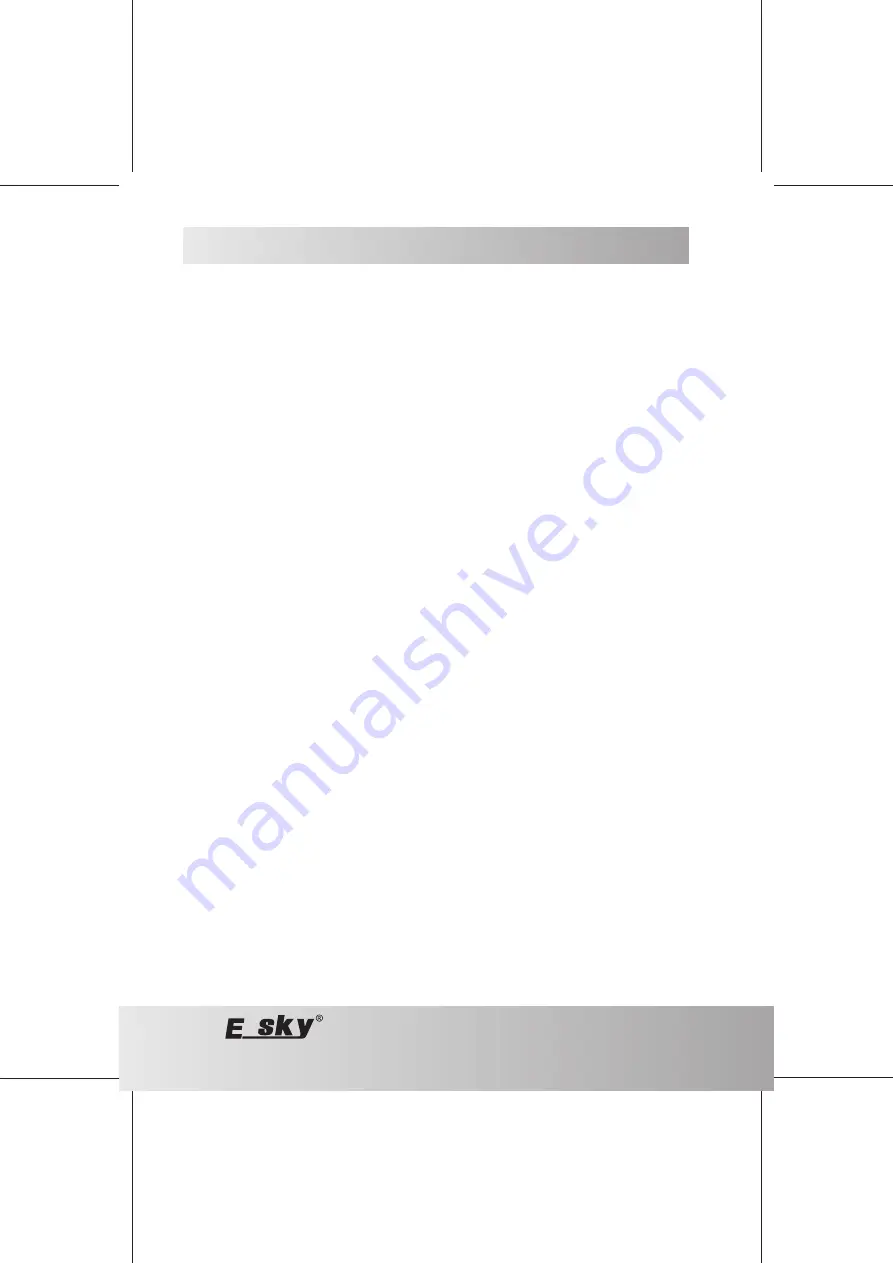
41
07/10
7. Notes on Batteries and Rechargeable Batteries
Despite the fact that handling batteries and rechargeable batteries in daily life nowadays is a matter of fact,
there are still numerous dangers and problems involved. For LiPo/Lion rechargeable batteries in particular,
various regulations must be observed under any circumstances due to their high energy content (in
comparison to conventional NiCd or NiMH rechargeable batteries), because otherwise there is danger of
explosion and fire.
Ensure that you observe the following information and safety measures when handling batteries and
rechargeable batteries.
• Keep batteries/rechargeable batteries out of the reach of children.
• Do not leave any batteries/rechargeable batteries lying around openly. There is a risk of batteries being swallowed
by children or pets. If swallowed, consult a doctor immediately!
• Batteries/rechargeable batteries must never be short-circuited, disassembled or thrown into fire. There is a danger
of explosion!
• Leaking or damaged batteries/rechargeable batteries can cause chemical burns to skin when touched without the
use of adequate protective gloves.
• Do not recharge normal batteries. There is a risk of fire and explosion! Only charge rechargeable batteries intended
for this purpose. Use suitable battery chargers. Batteries (1.5 V) are meant to be used once only and must be
properly disposed of when empty.
• When inserting batteries/rechargeable batteries or when connecting a battery pack or a charger, observe the correct
polarity (note plus/+ and minus/-). Wrong polarity may damage the transmitter, the airplane and the rechargeable
batteries. There also is a risk of fire and explosion.
• Always replace the entire set of batteries or rechargeable batteries. Never mix fully charged batteries/rechargeable
batteries with partially discharged ones. Always use batteries or rechargeable batteries of the same type and
manufacturer.
• Never mix batteries and rechargeable batteries! Either use batteries or rechargeable batteries for the remote control.
• If the device is not used for an extended period of time (e.g. storage), remove the inserted batteries (or rechargeable
batteries) from the remote control to avoid damage from leaking batteries/rechargeable batteries.
Attention!
After the flight, the rechargeable flight battery must be disconnected from the helicopter. Do not leave the
rechargeable flight battery connected to the helicopter if the latter is not used (e.g. during transport or
storage). Otherwise, the flight battery may be fully discharged and is thus destroyed/unusable!
• Recharge the rechargeable batteries about every 3 months, because otherwise there may be a total discharge due
to self-discharge, which makes the rechargeable batteries useless.
• The supplied charger may only be used for the enclosed LiPo flight battery. Never try to use it for charging different
rechargeable batteries. There is a risk of fire and explosion! The charger is not suitable for charging batteries in the
remote control transmitter!
• Never charge the enclosed flight battery immediately after use. Always leave the flight rechargeable battery to cool
off first (at least 10-15 minutes).
Only charge intact and undamaged batteries. If the external insulation of the rechargeable battery is damaged
or if the rechargeable battery is deformed or bloated, it must not be charged. In this case there is serious
danger of fire and explosion.
















































